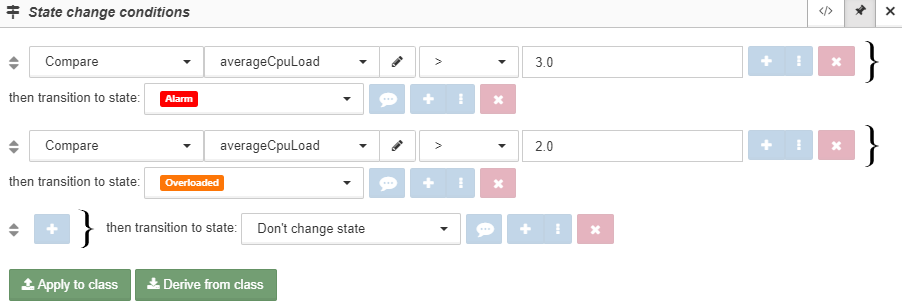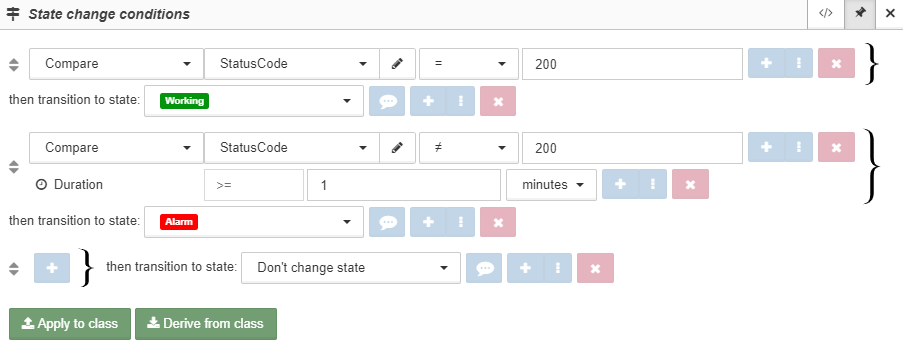Conditions priority
The verification of conditions works from the top down until one condition is implemented. The higher a record, the greater priority of the condition.
The order of records can be changed with drag&drop by the  icon.
icon.
If nary a condition is met, object state transits to the default state NO DATA with the reason No suitable condition.
The default object state can be set in the parameter default_state_id in the section Server of the server configuration file.
|
If it is required to prevent object state transition to the NO DATA state due to lack of a suitable condition, it is recommended to set the empty condition with the action Do not change state as the last record in the kit:

| The method described above works only for a completed check that returns any result to the server. In case the check cannot be accomplished, object state is transited to the NO DATA state. |
This option might also be useful if some value or a range of values must be ignored. For instance, if it is necessary to check whether some resource is accessible via HTTP-GET request, state conditions can be configured that way:
-
if the response code is equal to 200, the current state transits to the WORKING state;
-
if the code is not equal to 200 during more than a minute, the current state transits to the ALARM state;
-
otherwise the current state is not changed.
Example of such configuration:
